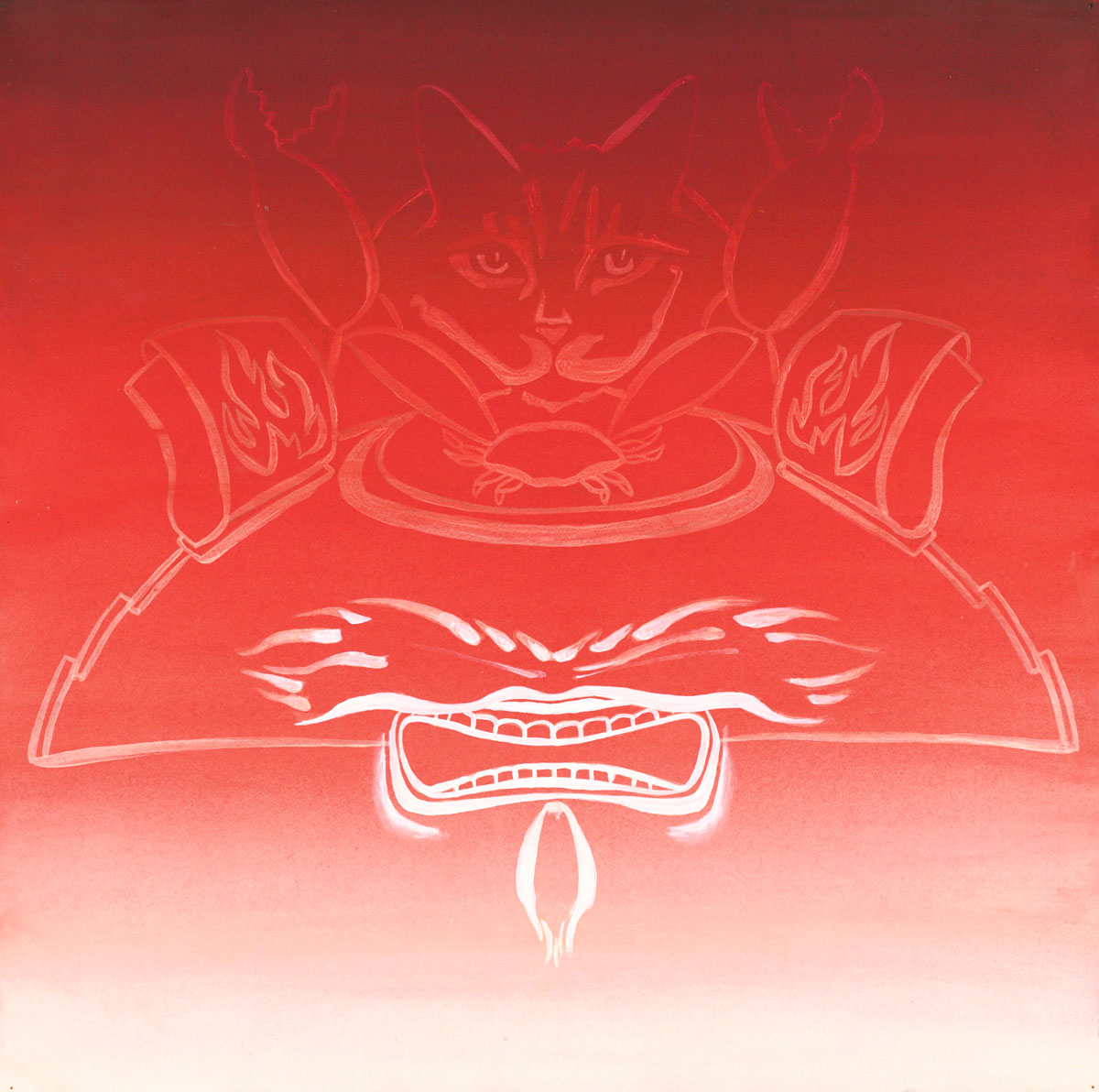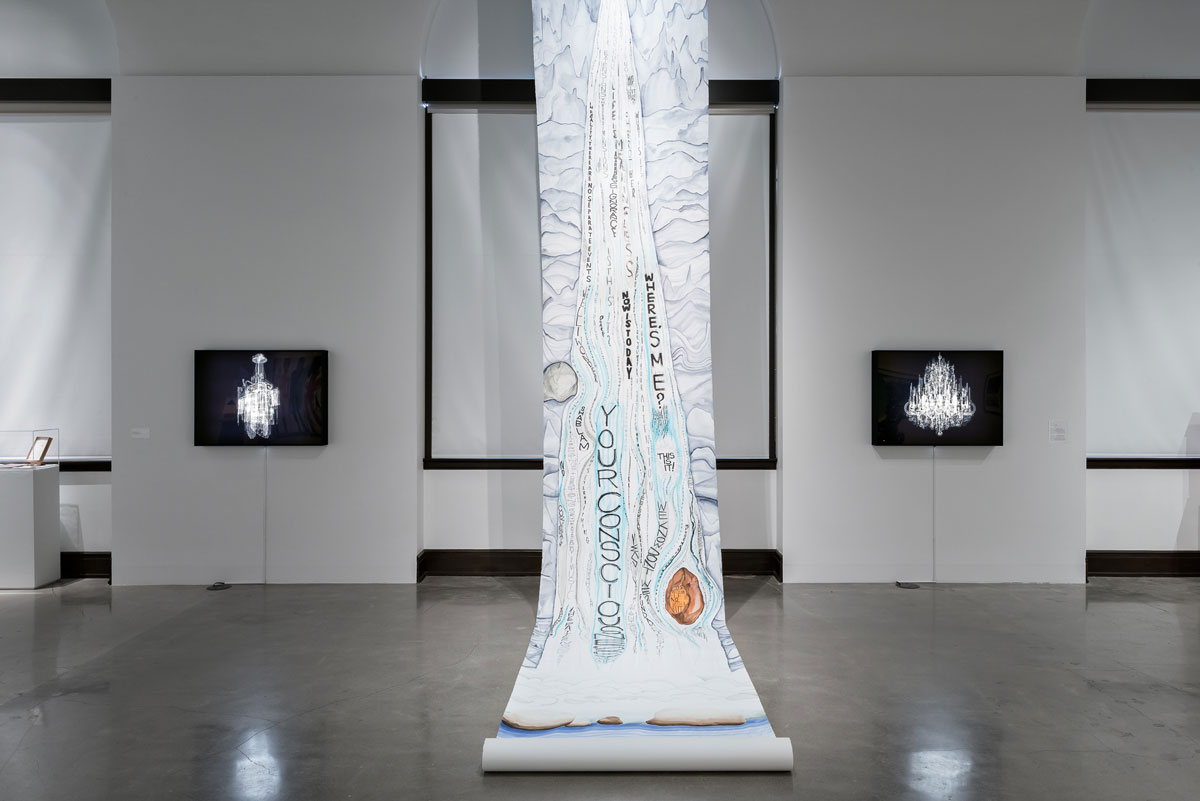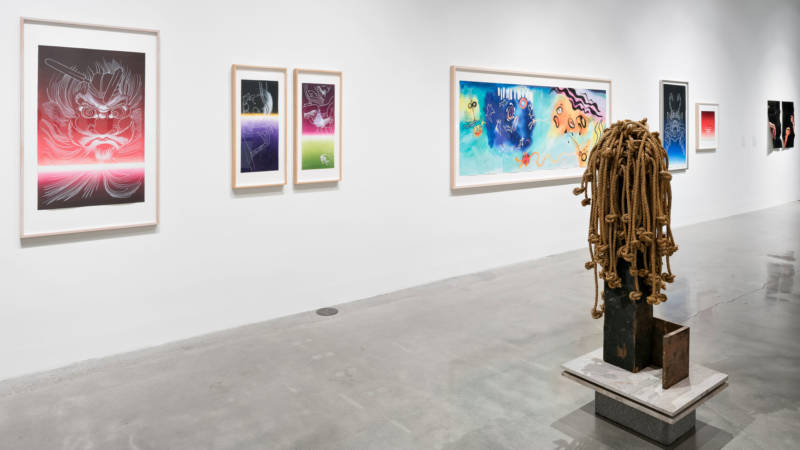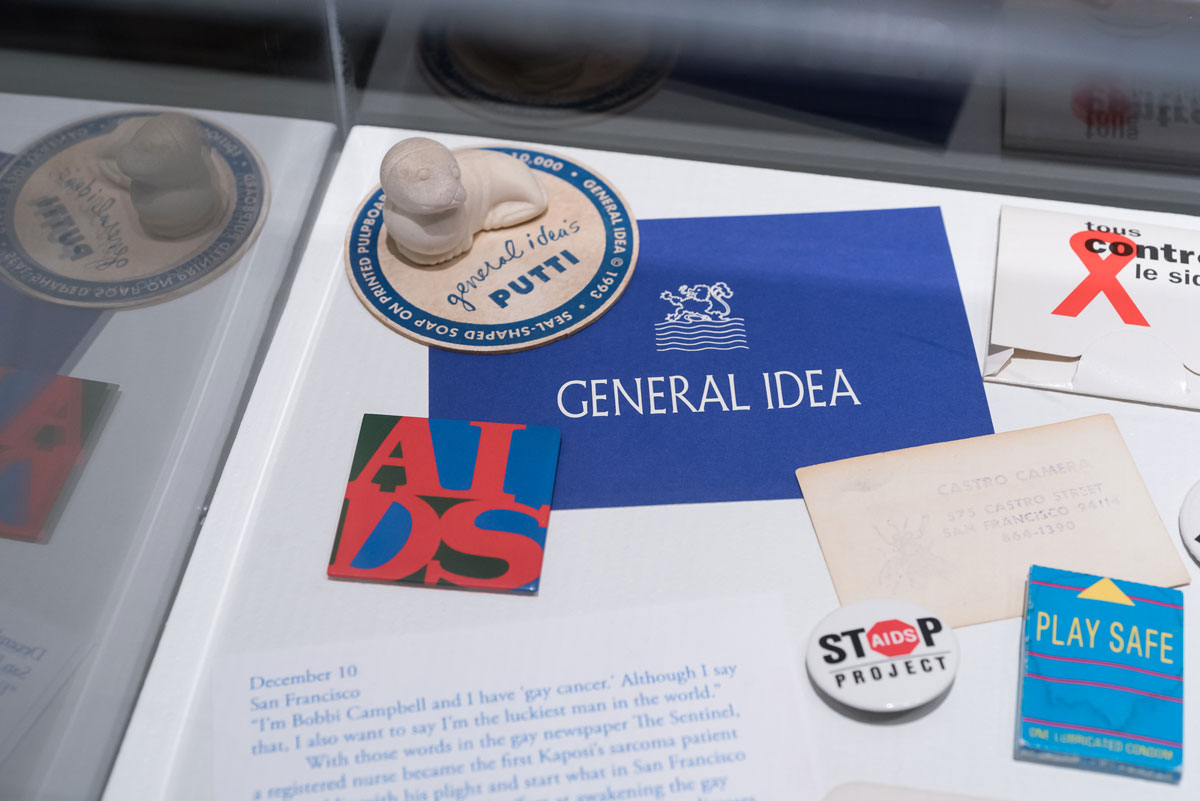In the back corner of the San Francisco Arts Commission Gallery, a small stack of Cliff Hengst’s Untitled (Signs) series lean against the wall. As a humble pile of acrylic paintings on wood, each panel obscures the text of the one behind it, and each bears an all-caps quote from James Comey’s book A Higher Loyalty: Truth, Lies, and Leadership.
The words of the powerful, the display seems to say, often amount to very little. And it’s ordinary citizens—artists, activists and the historically disenfranchised—who must advocate for themselves and their communities when no one else will.
With(out) With(in) the very moment, curated by San Francisco artist Margaret Tedesco, presents work by eight artists who witnessed moments when queer culture and activism were inseparable—and builds an argument for how those moments influenced their practices. With a focus on the legacies of HIV/AIDS activism of the 1980s and ’90s, With(out) borrows its title in part from the annual Day With(out) Art on Dec. 1, an event organized by the nonprofit Visual AIDS which calls for arts organizations to unite in a day of mourning and action, acknowledging an ongoing crisis.

The beating heart of the SFAC show is a group of works on paper by Ed Aulerich-Sugai, who died in 1994 of AIDS-related complications. During the last seven years of his life, Aulerich-Sugai was immensely productive, and just a small fraction of his output is on view. The most moving piece on view is He Cries, She Cries: Homage to Our Sisters, a large-scale horizontal full of anguished and discombobulated faces, a work that pays respect to the lesbian women who assumed the roles of caregivers during the HIV/AIDS epidemic. Hanging alongside it are delicate renderings of Japanese imagery (helmets, masks, gloves, ghosts and demons), which Aulerich-Sugai summoned as symbols of power and protection.
Aulerich-Sugai’s pairing of strong subject matter with fragile materials reflects the precarity of life during those years, a tactic picked up in later years by other artists in the exhibition. Hengst’s other contributions to the show, for example, are all works on paper, one of which cascades down from the ceiling to spread, like the waterfall it depicts, onto the gallery floor. Even a set of paintings on wood by Adam J. Ansell—messy full-body portraits of individuals—have the scaled-up dimensions of trading cards, imbuing the lively brushwork with a hint of ephemerality.

Another through-line in With(out) comes from the reuse or repurposing of materials. Creating new narratives and symbols out of found images, cut maps or mylar window tint—as Elliott Anderson, Mark M. Garrett and Mark Paron do—is life-affirming. These actions point a way forward, while still honoring the past.




